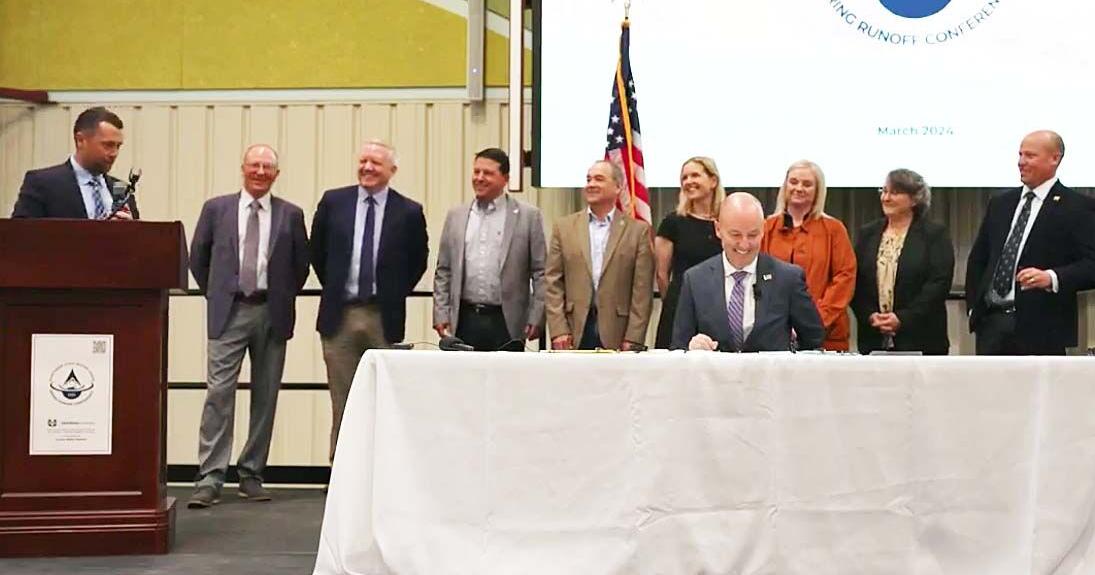
LOGAN – Gov. Spencer Cox and a host of state officials dropped in on the Spring Runoff Conference hosted by the Northern Utah Water Users on Mar. 26 to hold a ceremonial signing of water bills recently passed by the Utah Legislature.
Those measures included laws introduced by Cache Valley’s own Rep. Casey Snider (R-Paradise) and Sen. Scott Sandall (R-Tremonton).
In his remarks, Cox jokingly brought up his usual complaint that the recently-completed legislative general session passed too many new laws, a record number of 591. For a change, however, he also added a note of praise to that refrain.
“How many bills did Congress pass last year to run our country?” the governor asked the packed crowd of water users at the Cache County Event Center. “Twenty seven bills … because they aren’t looking long-term at all!
“They’re not just not looking a couple years ahead,” Cox argued. “They’re not even looking two months ahead.”
But Cox praised the Utah difference, in that the state’s farsighted lawmakers are passing water bills that are planning for and addressing concerns that are still 30 or 40 years down the road.
The laws enacted by Cox at the Logan water conference included House Bill 280 (Water Related Changes); House Bill 453 (Great Salt Lake Revisions); Senate Bill 18 (Water Modifications); and Senate Bill 211 (Generational Water Infrastructure Amendments).
As introduced by Snider, HB 280 requires a study of the financing of statewide water infrastructure projects and established a Water Infrastructure Fund.
HB 453 protects the Great Salt Lake by establishing a framework to ensure the investments made in the lake and conservation efforts by citizens are safeguarded and dedicated to the lake.
Thanks to Sandall, SB 18 allows the agricultural community to save, monetize and sell their excess water while maintaining their water rights.
SB 211 addresses Utah’s long-term need for adequate and reliable water by creating the Water District Water Development Council and a Utah Water Agent to plan for and develop generational water infrastructure projects that look 75-100 years into the future.
In other remarks, the governor hailed the members of the 2024 Legislature for making further strides by investing in water conservation and infrastructure, thus securing a more sustainable future for Utah.
Just as the pioneers before us did, Cox emphasized, today’s Utahns must dedicate resources toward preserving natural treasures such as the Great Salt Lake, which is vital to our state’s ecosystem.
In addition to Snider and Sandall, other state officials who Cox in the ceremonial signing of those bills included Joel Ferry, the director of the Department of Natural Resources; Craig Buttars, the director of the Department of Agriculture; and Brian Steed, the state’s Commission of the Great Salt Lakes and executive director of the Janet Quinney Lawson Institute for Land, Water and Air at Utah State University.
Local officials at the event included Logan City Council member Jeannie Simmonds and Cache County Council chair David Erickson.
Sponsors of the two-day Northern Utah Water Users Spring Runoff Conference included the Bear River Conservancy District, the Cache Water District, the USU Janet Quinney Lawson Institute, the Utah Water Users Association and other shareholders.

